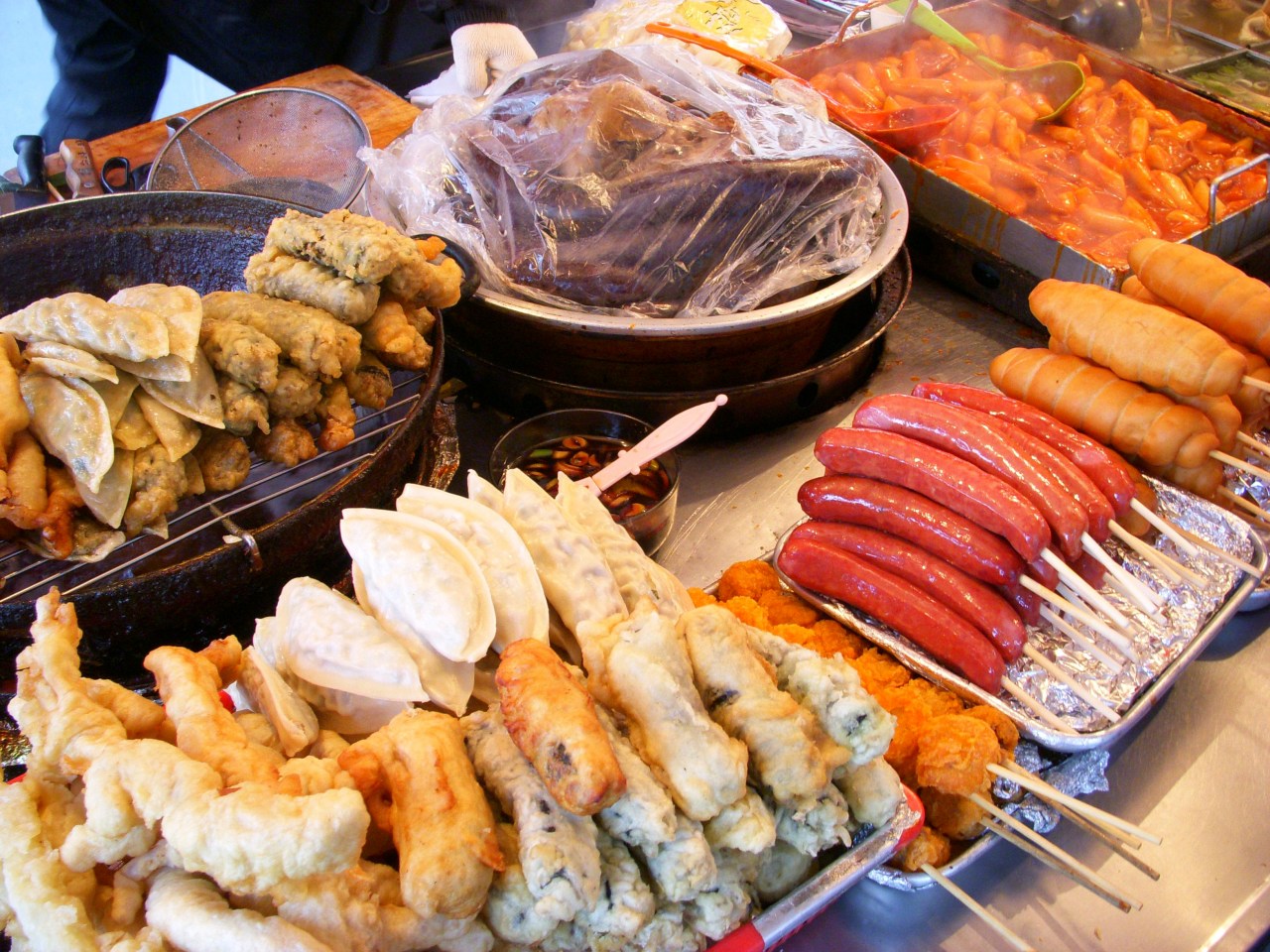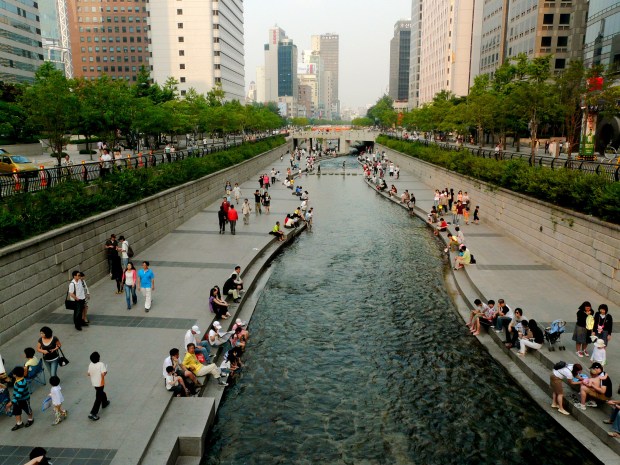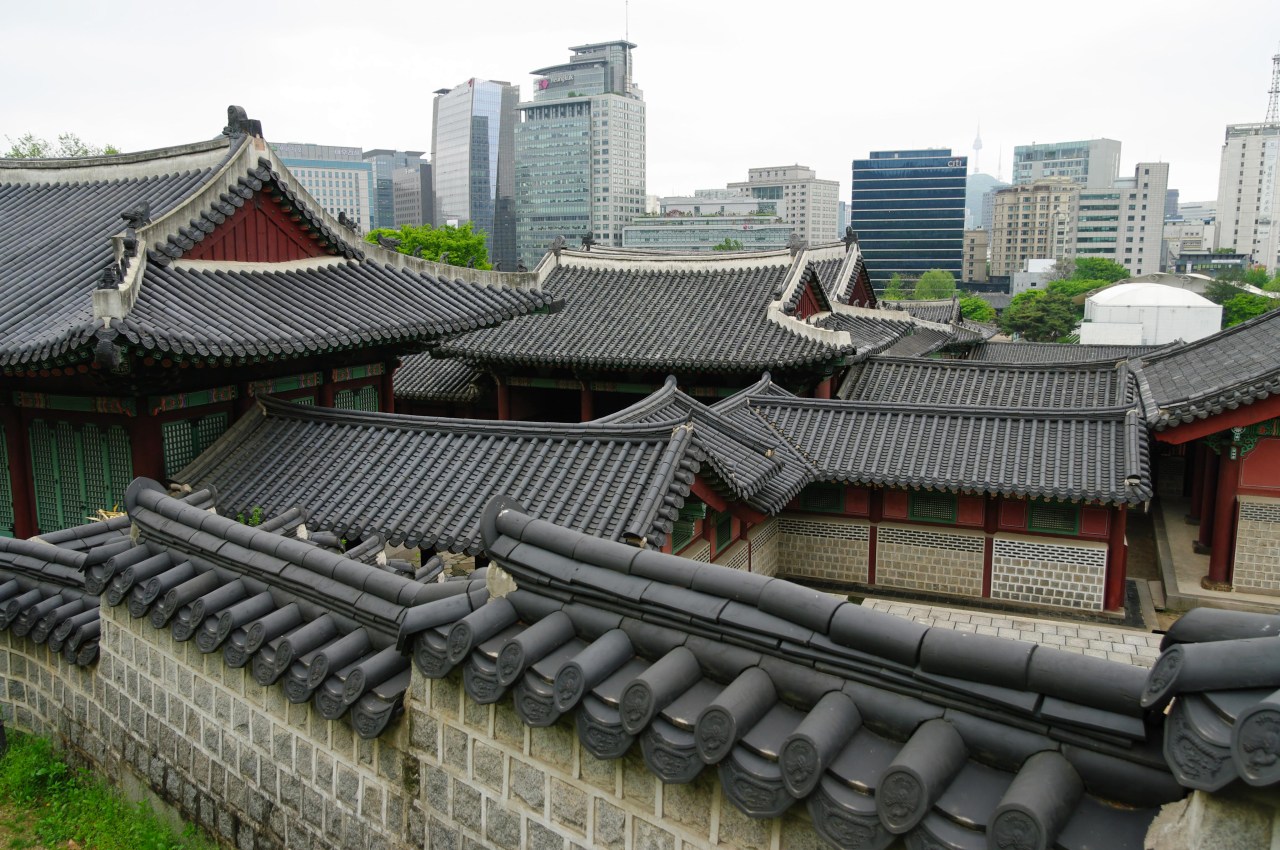1. It’s not arrogance: it’s pride. “You know kimchi, yes?” “Delicious, yes?” Questions like these are offerings meant to welcome, but also to impress. This is how Koreans express national pride. It is earnest and often endearing. It can take the form of Samsung small talk and soju samples. It calls for Ban Ki-moon mentions and K-pop dances. Every local from your bartender to your cabbie is a cultural ambassador, ready to teach you what it means to be Korean. Even a basic awareness of Korean cultural staples will go a long way in making you friends on the ground. Note: inside South Korea, as it’s referred to on the world map, the country is known simply as “Korea”.
2. Confucian manners rule. In the Land of Morning Calm Confucius is king. He reigns over every part of Korean society, imposing virtues, structure, and sense. In cosmopolitan, ultra-modern Seoul, traditional Confucianism is the fuel that powers the city’s hums and happenings—all the small interactions between families, friends, lovers, colleagues, neighbors, generations, and strangers that collectively make up life. For the novice, the system is nuanced in some ways and not at all in others: speak to elders with care and politeness (Korean has special honorific speech for this), never refuse a host’s invitation to dine and drink together, offer your bus seat to the greying lady who’s standing. At its core, Korea’s identity is all about social harmony.
3. Seoul is a sardine can. With a metro population of over 25 million—half Korea’s total—Seoul is like a Dhaka-and-a-half, with congestion rivaling Shanghai, Mexico City, and New York. The subway system is the world’s most crowded. Seoul’s public spaces are packed with pedestrians, vendors, pamphlet-pushers, and food stands. Mix the high density with a social system that emboldens feisty old ajumma ladies and ajeoshi men to push you out of their way, and you’ve got the chaos that defines Seoul. But at the right place and time, this city can be peaceful, too. Wander into a Buddhist temple once the ceremony is over. Stumble down a winding back alley away from the crowds on the main drag. Grab these moments when you can: you may not have another opportunity for days.
4. Beware black cabs. If you accidentally hail one, you’ll be hit with a big bill at the end of the ride. More expensive than their non-black counterparts, Korea’s “deluxe taxis” charge a premium for their supposedly safer and more trustworthy services. But they’re rarely worth the extra money. Instead, just hop in a regular taxi, which in Korean is taxi, tell the cabbie where you want to go, followed by ka juseyo (go please), and make sure the meter is running—then buckle up and hold on tight.
5. Street food is always there for you. Celebrate the fall harvest Chuseok with songpyeon sweets. Nurse a hangover with haejangguk soup. Bond with new friends over a loaded table of banchan side dishes. Koreans hold dear an endless array of food rituals, but they are most sentimental about the street snack: warm goldfish-shaped bread stuffed with sweet red-bean filling; paper cups of chewy ddeokbokki rice cakes with explosive spice that stains your mouth red; sugary cream-frosted waffles. Korea’s street food is plentiful and varied. Sometimes it’s whimsical: spiraling skewers of potato chips, or hot dogs encased in French fries. Other times it’s homey: battered and deep-fried peppers, odeng fish cakes swimming in a salty broth. Koreans know these foods will be waiting for them, lining Seoul’s streets at all hours of the day and night. You’ll come to count on them, too.
6. Check your chopsticks. Korean chopsticks are made of metal, and are therefore more slippery than wooden ones, which can take some getting used to. Koreans won’t care about your chopstick skill level, but they might judge you for your chopstick etiquette. Sitting down to a meal and picking up your chopsticks before your elders do is considered rude; so is using them to dig around looking for something specific in your food. Don’t wield them as a spear or skewer. And certainly don’t position them like a stake, sticking vertically out of your bowl. When you finish eating, return your chopsticks to their original place on the table. If it all feels overwhelming, rejoice in this: you are not obligated to pick up every tiny grain of rice with chopsticks; in Korea, it’s customary to eat rice with a spoon.

7. Korean + English = Konglish. Konglish are the English words and the mashups of English words that Koreans have adopted into their own language. If you don’t know Korean, Konglish comes in handy. But it’s not as straightforward as it seems. Sometimes a Konglish term translates like a true English loan word (hotel, burger, computer, and ice cream, for example), while other times it doesn’t and takes on a slightly or entirely different meaning (a meeting in English is actually a blind date in Konglish, the English word sharp morphs into the Konglish term for mechanical pencil, and Koreans use the adjective cunning the way English speakers use the verb cheating). Sometimes two English words are stuck together, resulting in a term that’s gibberish in English but translates into a real expression in Konglish (eye shopping means window shopping, hand phone is cell phone, and officetel, or office + hotel, is a building with businesses on the first floor and accommodations above). The world of Konglish lends great insight into Western influences on Korean culture.
8. Soju is as cheap as water. This distilled ethanol and water mix is so affordable it’s become the ultimate everyman’s drink. It can be enjoyed neat, in a cocktail, flavored with fruit, blended with yogurt, and combined with beer. Soju, ranging from 20-to-45 percent alcohol-by-volume, dates back to the 13th century and hasn’t lost any of its appeal 800 years on: Koreans set an all-time sales record in 2004, buying 3 billion bottles (87 per person of drinking age). Don’t miss soju: order it dressed up at Seoul’s swankiest clubs and private noraebang karaoke rooms, or order it plain at a dive bar or restaurant. Best of all, stop in a 7-Eleven, CU, or any other convenience store, and buy a 375ml bottle of soju for as little as 1,000 won, or about $1 U.S.—as much as you would pay for a bottle of water (which, by the way, is also a must, because the stuff that comes from the tap is not advised).
9. It’s a no-tipping culture. And restaurant service still manages to be next-level. Dining in Seoul, you’ll find your table has its own voice: a “ding dong!” summons a waitress, who scurries over with a smile. With each press of the button, she’s back again—to take your order, refill your drink, or bring the check. These ding-dong buttons in Korean restaurants tables allow diners to summon attention without words or a wave. In between all the ding-donging, waitresses often drop off on-the-house treats, which in Konglish is service, ranging from free drinks to extra appetizers. But when it’s all over, don’t leave a tip: it’s just not done here. (In fact, unless you’re at an overtly Americanized establishment, it’s sometimes considered an insult, because in Korea the only workers who customarily receive tips are strippers.)
10. Seoul is an hour and half from one of the most dangerous borders in the world. The demilitarized zone is not really demilitarized. The buffer established at the end of the Korean War, this 155-mile border divides the two Koreas with heavy artillery, North Korean nukes, and two million soldiers. Life along the 38th parallel is in a stalemate—the two sides are technically still at war—with tension captured in a still-life. Go to Panmunjeom for a glimpse of the surreal, North and South Korean soldiers standing face-to-face at the Joint Security Area, or a fake North Korean village, lit up and brightly painted, but empty. At the gift shop, browse the unsettling kitsch, the DMZ knick-knacks, and North Korean alcohol. Then head to Dora Observatory to venture into the third of the four tunnels that North Korea dug into South—the longest stretched almost a mile—and stop at Dorasan, South Korea’s northernmost subway station, fully outfitted but filled only with tourists, ready to bridge the two Koreas the moment they reunite–if they ever do. In truth, reunification is feared by many young people in South Korea, because they believe absorbing the North’s poverty would set South Korea back years, and cost billions.

11. Shopping is not just shopping. It’s a symbol of progress—and a crisis of conscience. From the 1960s onward, Korea industrialized at a mind-boggling rate. It led to an improved, but also a Westernized, standard of living, bringing in foreign trends, big-box stores, franchise brands—and rampant consumerism. For Koreans, the transition has been difficult to navigate, with some welcoming their newfound commercial culture and others lamenting it. Now, as more traditional markets are being displaced, Korean law is responding by requiring megastores like Tesco HomePlus and Costco to shutter their doors two Sundays a month. On those days—and all the others, too—try Seoul’s local favorites: there’s Namdaemun market for practicing your bargaining skills, Myeongdong’s outdoor stalls for finding cheap fashion thrills, and all those umbrella-covered sidewalks that smell of fish and fruit, ideal for snacking and strolling.
12. Japan is a touchy subject. Tread lightly. Koreans are haunted by the 35 years of Japanese rule that from 1910 to 1945 forced tens of thousands of men into the Imperial Japanese Army and tens of thousands of women into sexual slavery. Since then, the tragedy of “comfort women,” as they are euphemistically called, has cast a shadow over Korean-Japanese relations, as these partners in trade and allies in international relations struggle to settle on history. In December 2015, the two nations finally struck a deal, with Japan issuing a formal apology and pledging one billion yen to support Korea’s 46 surviving comfort women. But the issue is not fully resolved. Outside Seoul’s Japanese Embassy is a bronze statue of a comfort woman; she has been stationed there, in silent protest, since 2011. Her fate—whether she is allowed to remain, as Koreans want, or taken down, as Japanese do—is in some ways representative of the legacy at stake. In Korea, the assortment of emotions is complicated: there are the old who lived through the annexation and forgive, there are the young who didn’t and don’t, and there are the ones in between just trying to make sense of it all.
13. Superstitions die hard. If you stay in a more traditional hotel or motel room in Seoul, asking for a box fan might cause alarm. According to an age-old Korean superstition, sleeping in a closed room with a blowing fan will suck the oxygen out of the room. Going to the fourth floor of a building can be a challenge, too. In the elevators of some of Seoul’s older buildings, you might notice there is no number 4—it goes 1, 2, 3, F, 5—because it’s a traditionally unlucky number. Superstitious residents won’t whistle at night so they won’t attract evil spirits, or wash their hair on the Lunar New Year for fear of rinsing away their good luck. Forward-looking Seoul also holds onto superstitions like an old teddy bear.
14. There’s a room for every mood. Cramped quarters, and customs that keep Koreans living with parents until marriage, mean people take many of their social gatherings outside of the home to rented rooms in establishments. These specialty rooms—or bang—cater to almost any activity you seek, from sleeping to singing. If you want to watch a movie on DVD, there’s a room for that (a DVD bang). If you’d like to play a computer game, video game, board game, or even a golf game, there are rooms for all of those. In Korea, these bang host life as sincerely as the private rooms of any home. They are like family rooms for friends.

15. Seoul is more tech-ed up than Silicon Valley. This is the world’s most connected city. Wi-Fi is integrated into every subway station, platform, train, and many public spaces, including some energy-efficient street lamps; transit stations are equipped with digital information terminals; and virtual stores, posted on street billboards, enable shopping and scheduling deliveries on the go. In Seoul, some low-income families are given free second-hand smart devices. The u-Seoul safety service pairs CCTV technology with GPS devices to alert caregivers and authorities when children, the elderly, and people with disabilities or Alzheimer’s stray from their designated safe zone. Driven by expansive infrastructure and a competitive business environment, the city boasts super high-speed Internet at super low prices. Just watch out for the texters, Internet surfers, and Korean soap opera streamers not paying attention on the street.
16. X doesn’t mark the spot. As homogenous as Korea is—it’s the least ethnically diverse nation in the world, according to a 2013 Harvard study—most Koreans will love you. But some buy into the perception that expats are there to get drunk and party, and chase Korean women for dates. While interracial relationships are becoming more socially acceptable in Korea, they’re still usually considered flings. Some Koreans will date non-Koreans, but most will only marry their own. The ones who are open-minded—and there are many—will be eager to practice their English or explore other cultures with you. But the ones who are not might ward you off by crossing their hands into an X. Try not to take it personally.
17. Forget Paris—Seoul is the city for lovers. Koreans are romantics at heart, and have some distinctive ways to display their love. Couples clothing dresses partners in matching outfits. Couples rings proclaim commitment, even without an official engagement. At Seoul’s movie theaters, lovebirds sit on couples couches, double-wide seats specially built for optimal snuggling and hand-holding. Atop the N Seoul Tower, couples bolt their undying devotion to fencing using padlocks marked with their initials or names. Lovers celebrate not just anniversaries but every one hundred days of their relationship. They observe Valentine’s Day, when girls dote on their boyfriends, and also White Day, imported from Japan and celebrated March 14, when the roles are reversed. If you’re lucky enough to be in love in Korea, don’t hold back.
Originally published on Roads & Kingdoms.